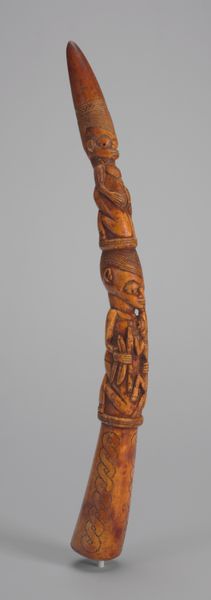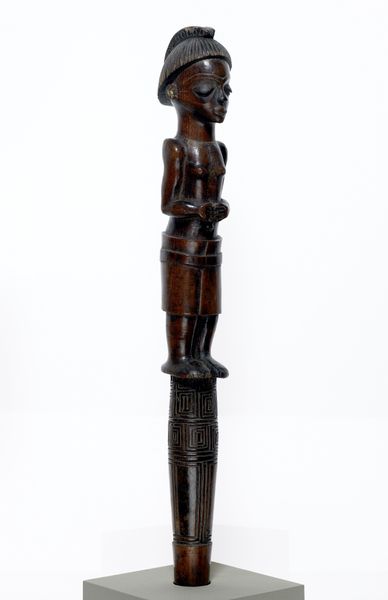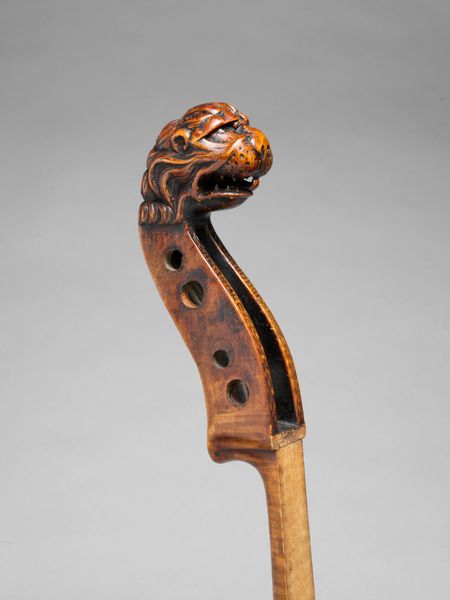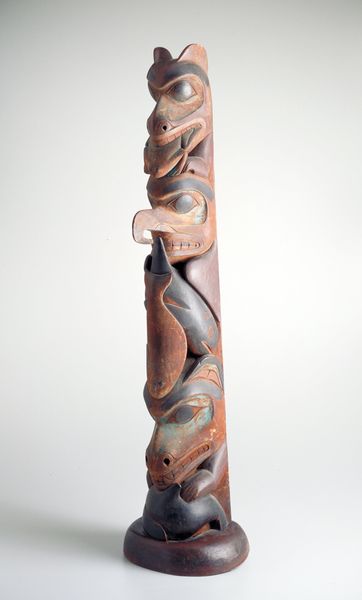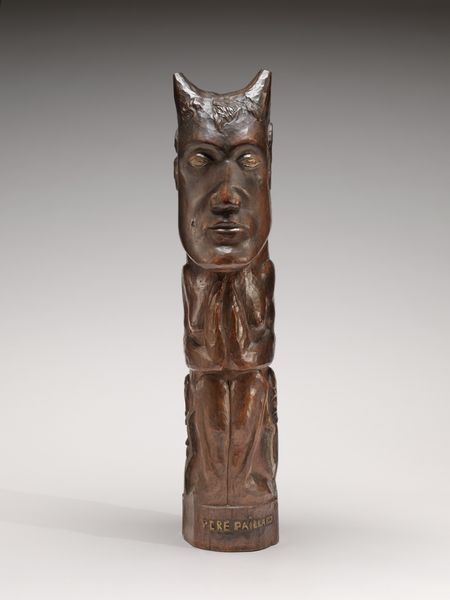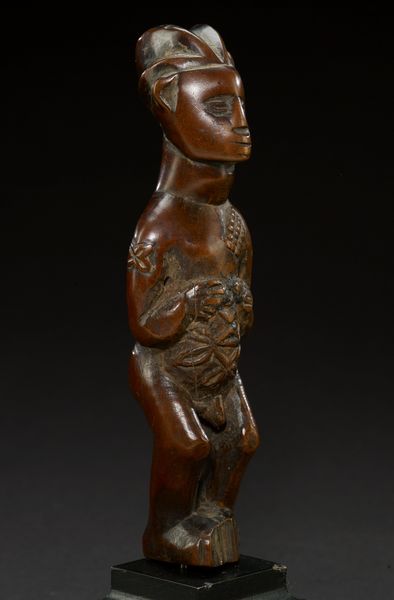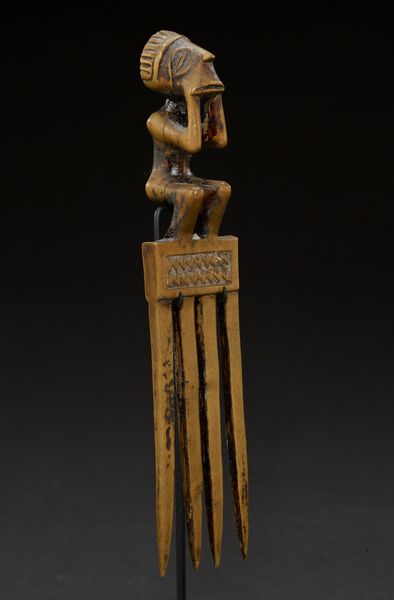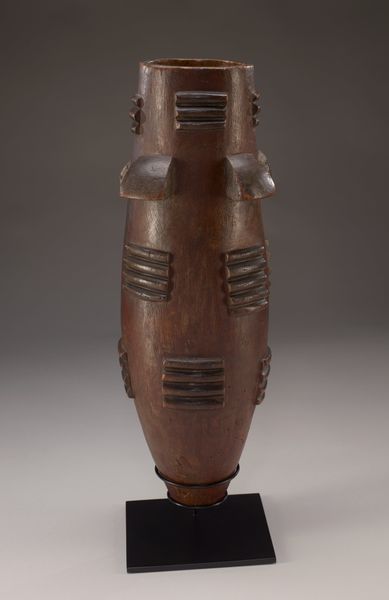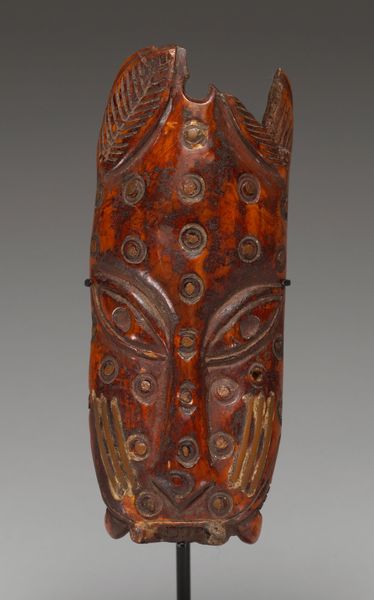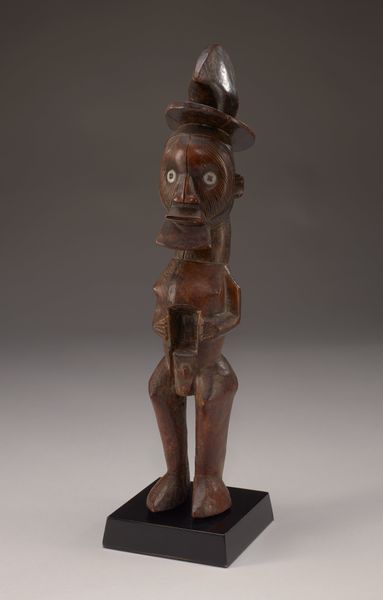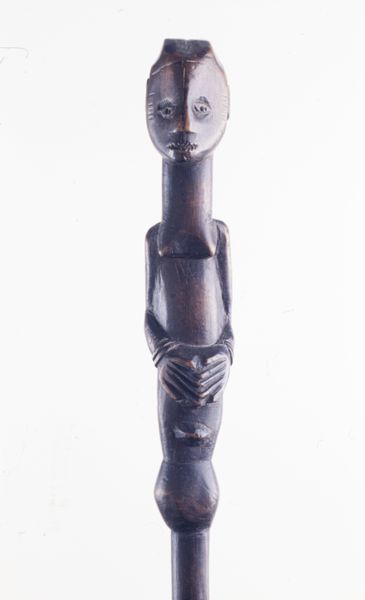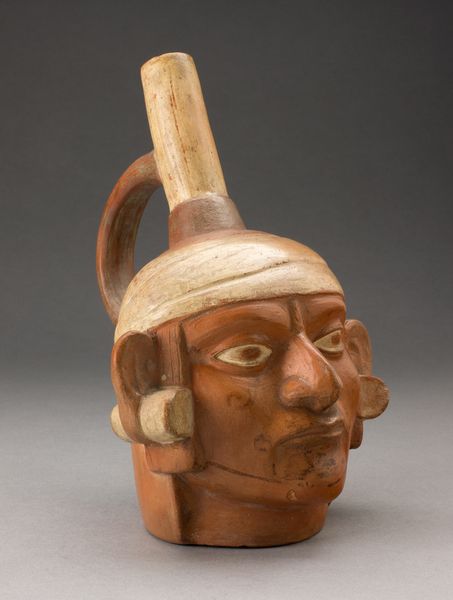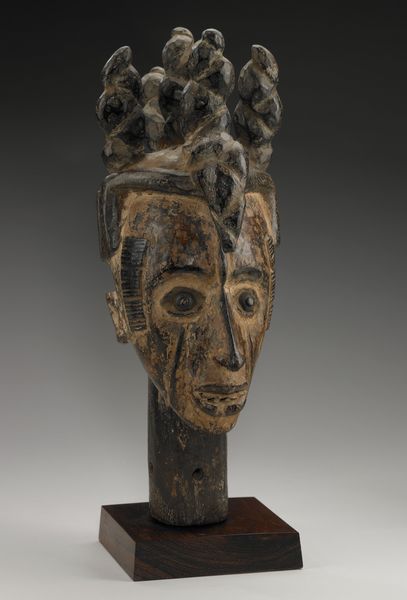
carving, sculpture, ivory
#
portrait
#
carving
#
sculpture
#
sculptural image
#
figuration
#
sculpture
#
yoruba-art
#
ivory
Dimensions: 9 1/4 × 1 1/8 in. (23.5 × 2.86 cm)
Copyright: Public Domain
This Tapper was skillfully carved from ivory by a Yoruba artist. Though we don’t know exactly when, it likely reflects the dynamic and sophisticated culture of southwestern Nigeria. Tappers like this one were often used during Ifa divination ceremonies, where the tapping sound invited the presence of spirits and ancestors. The figure at the top connects the object to Yoruba beliefs, which center on a supreme creator and a pantheon of deities called orishas. What’s fascinating is that as colonialism intensified in the 19th and 20th centuries, Yoruba art became highly sought after by European collectors. Museums and private collections acquired such pieces, and they were often displayed out of context, valued more for their aesthetic appeal than their spiritual significance. Understanding the Tapper fully requires us to look at not only Yoruba culture but also the history of collecting and display practices that have shaped how we see African art today. Resources like ethnographic studies and colonial archives can help us reconstruct these complex histories and appreciate the Tapper's multilayered cultural significance.
Comments
minneapolisinstituteofart almost 2 years ago
⋮
Tappers are commonly used in Yoruba divination practices to greet and summon Orunmila, the god of fate who is associated with knowledge and wisdom. This example is made of ivory, a material treasured for its durability, scarcity, and association with the elephant—a symbol of sovereignty. Its pointed end is used to tap the divination tray. The handle is formed by a kneeling female figure holding her breasts, a common motif in Yoruba art that refers to humanity receiving spiritual nourishment.
Join the conversation
Join millions of artists and users on Artera today and experience the ultimate creative platform.
